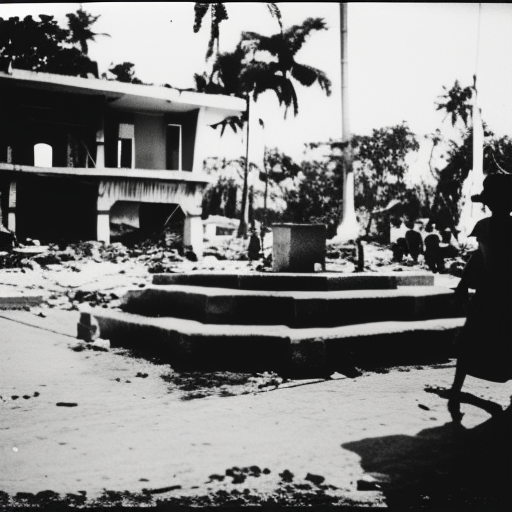Summary: The 2010 Haiti earthquake was a devastating natural disaster that struck the Caribbean nation of Haiti on January 12, 2010. With a magnitude of 7.0, the earthquake caused widespread destruction, resulting in the deaths of an estimated 230,000 people and leaving over 1.5 million others homeless.
Background:
Haiti, the poorest country in the Western Hemisphere, was already facing numerous challenges before the earthquake. Political instability, poverty, and inadequate infrastructure made the country particularly vulnerable to natural disasters. The earthquake’s epicenter was located near the capital city of Port-au-Prince, exacerbating the impact on the densely populated area.
The Earthquake:
The earthquake struck at 4:53 PM local time and lasted approximately 35 seconds. The shallow depth of the quake, combined with its proximity to densely populated areas, contributed to the extensive damage. Buildings, including hospitals, schools, and government buildings, collapsed, trapping people under the rubble. The lack of emergency response infrastructure further hampered rescue efforts.
International Response:
The international community rallied to provide assistance to Haiti in the aftermath of the earthquake. Governments, non-governmental organizations (NGOs), and individuals from around the world offered financial aid, search and rescue teams, medical supplies, and humanitarian support. The United Nations launched a massive relief operation, and countries such as the United States, Canada, and France deployed military forces to assist in the relief efforts.
Challenges and Criticisms:
Despite the international response, the relief efforts faced numerous challenges. The destruction of infrastructure, including roads and ports, made it difficult to deliver aid to affected areas. The overwhelmed local government struggled to coordinate relief efforts, leading to delays and inefficiencies. Additionally, concerns were raised about the transparency and accountability of the funds donated to Haiti, with allegations of corruption and mismanagement.
Long-Term Impact:
The earthquake had a profound and long-lasting impact on Haiti. The already fragile economy was further devastated, with estimates suggesting that the disaster caused economic losses equivalent to 120% of the country’s GDP. The destruction of infrastructure, including hospitals and schools, hindered the country’s ability to recover and rebuild. The displacement of over 1.5 million people created a massive humanitarian crisis, with many living in makeshift camps for years.
Lessons Learned:
The 2010 Haiti earthquake highlighted the importance of disaster preparedness and the need for resilient infrastructure in vulnerable regions. It also underscored the significance of effective coordination between local and international actors in emergency response efforts. The international community recognized the need for long-term support and committed to assisting Haiti in its recovery and reconstruction efforts.
Rebuilding and Recovery:
Rebuilding Haiti has been a slow and challenging process. The country faced numerous obstacles, including political instability, corruption, and a lack of resources. However, progress has been made in some areas, such as healthcare and education. International organizations and NGOs continue to work alongside the Haitian government to support reconstruction efforts and promote sustainable development.
Conclusion:
The 2010 Haiti earthquake was a catastrophic event that caused immense loss of life and widespread destruction. It exposed the vulnerabilities of a country already facing significant challenges. The international response demonstrated the importance of global solidarity in times of crisis. However, the long-term recovery and rebuilding process in Haiti remains ongoing, highlighting the need for sustained support and investment in disaster-prone regions.












